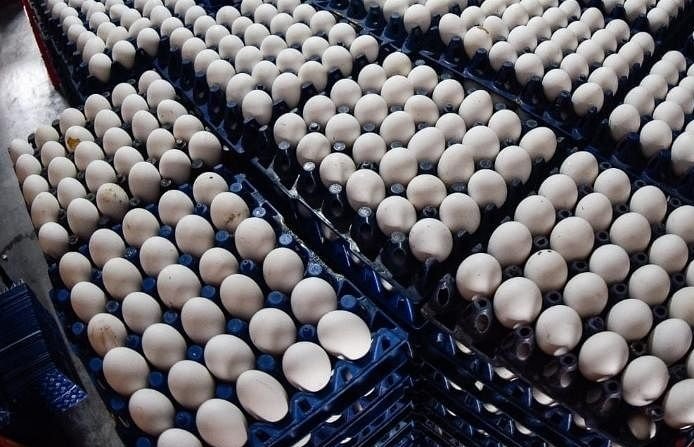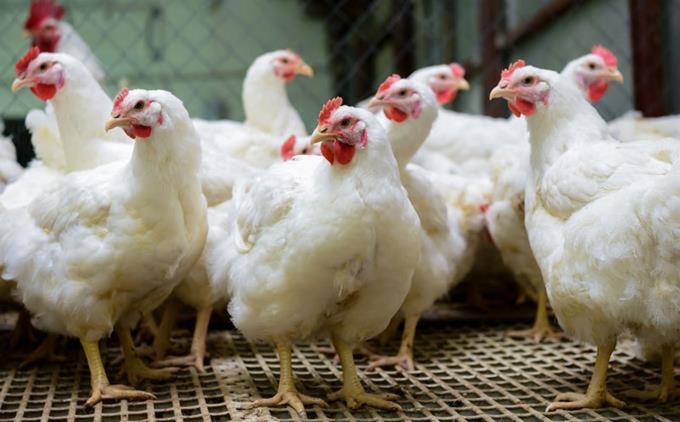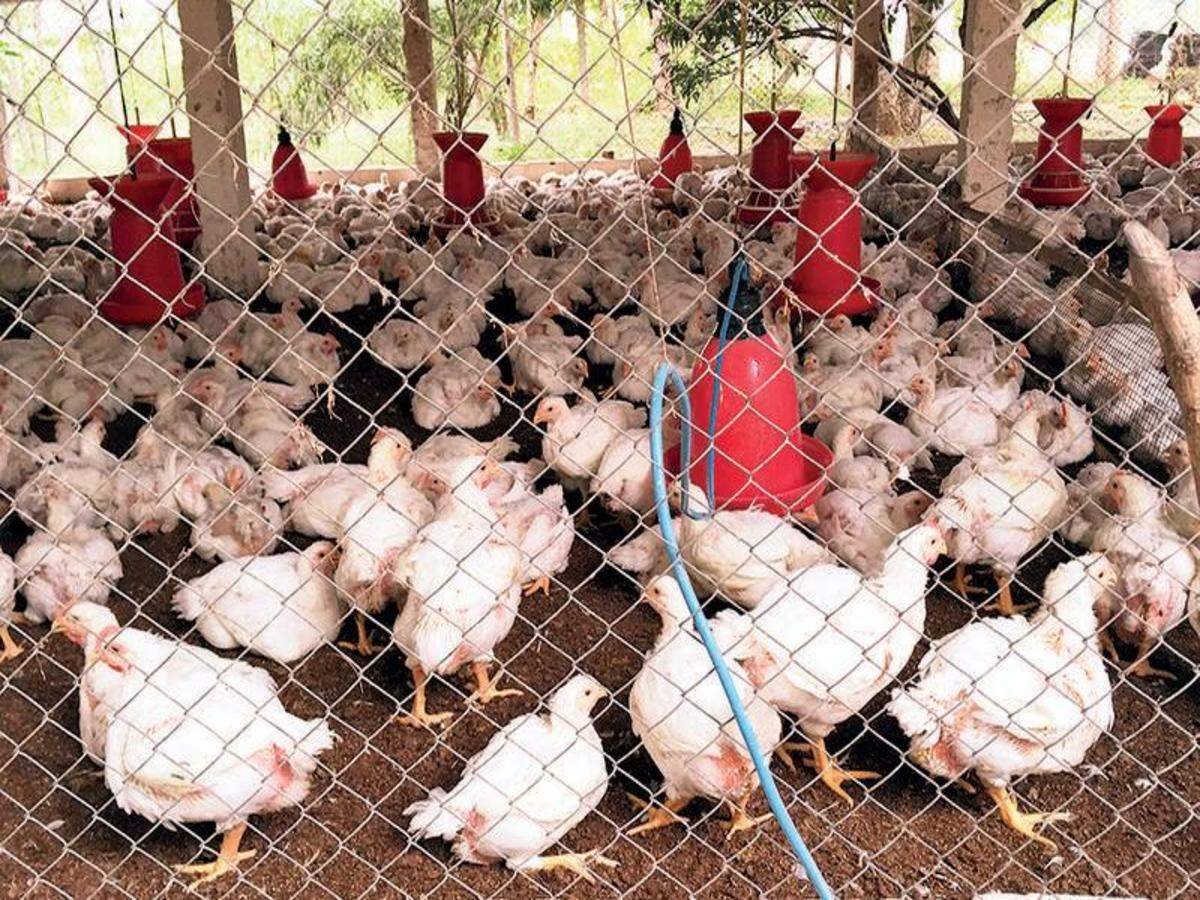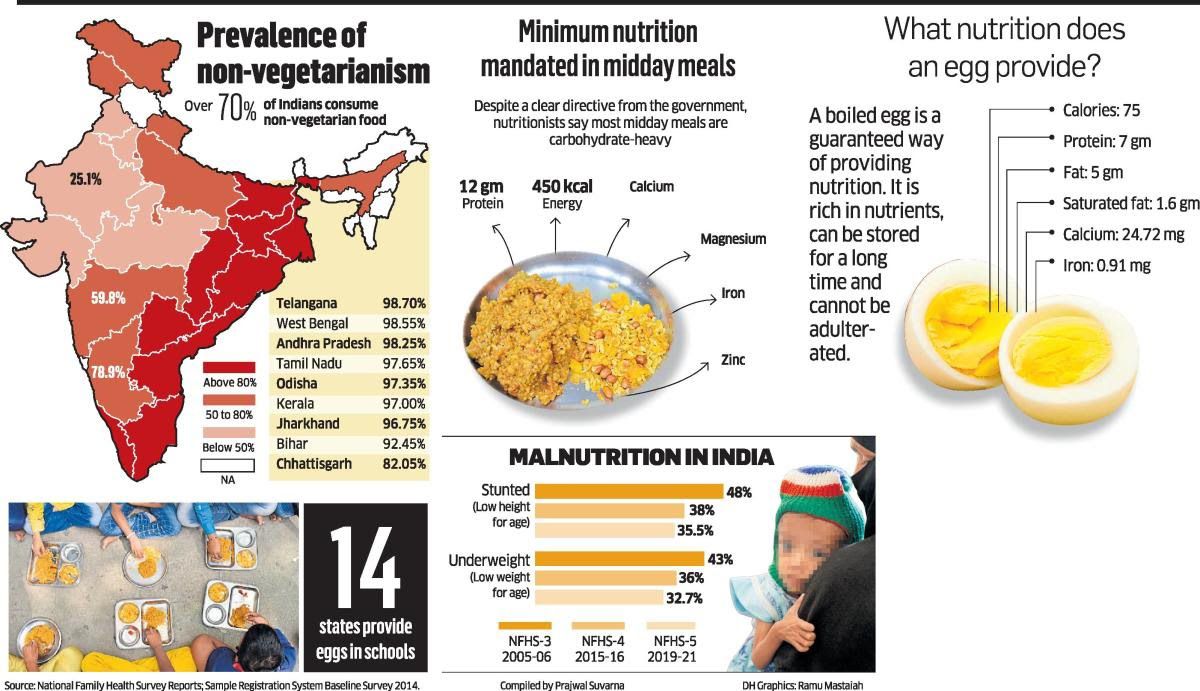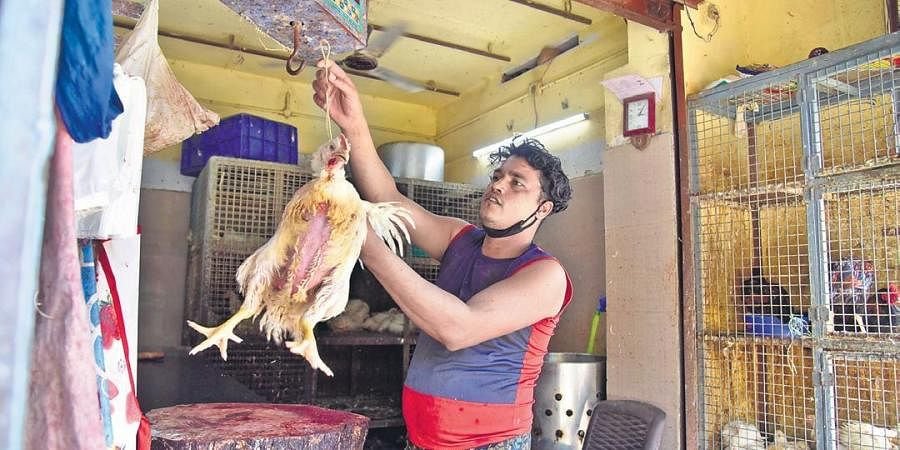Water Quality
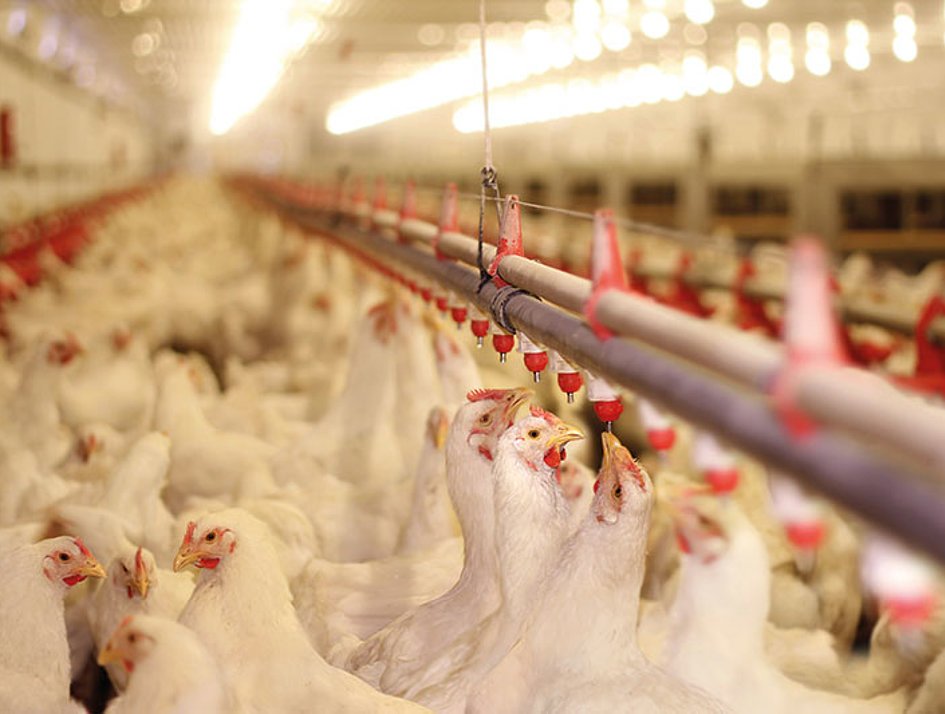
Introduction
Water is a required nutrient that is easily overlooked until it is absent. Water represents between 55% and 75% of the weight of a chicken and 65% of the egg. About 70% is inside the cells and 30% is in fluid surrounding the cells and in blood. As fat increases in the carcass with age, the percentage of total body water decreases. Water acts as a solvent for other inorganic and organic nutrients, is essential in metabolism and is required for movement of feed through the digestive system. Water is able to store a large amount of heat in liquid form and then lose heat upon evaporation. This makes it extremely important in temperature regulation. Water is also a useful medium for flock medication. Water quality must consider temperature, dissolved minerals, organic material, and microbial contamination. The poultry farm must be managed to provide clean and cool water to all birds at all times.
Water Quality
Many factors can affect water quality. Of importance are bacteria, especially coliforms(recomended less than 50mpm), too high or too low pH level(recomended between 6.8 and7.2), extreme hardness, high magnesium, high nitrates and nitrites, high sodium, chloride and other minerals. Water should be checked periodically for bacteria and minerals. Water should be tested during periods of both low and high rainfall. Water that is safe for human consumption is generally considered suitable for poultry. Chickens may satisfy a significant amount of nutrient requirement throught drinking water: calcium (7-28%), magnesium (up to 9%), sodium (20-40%), sulfur (20-45%). More than this is considered excess and may result in poor performance.
Saline water has been found to have a definite negative effect on poultry performance. Eggshell quality in layers is rapidly reduced being noticeable within four to six weeks in young pullets and within a few days in older hens . The adverse effects in hens do not appear to be reversible. Egg defects from hens exposed to saline water do not improve after being returned to normal water. Thus prevention of damage in important.
Water Consumption
Under normal conditions, it is generally assumed that birds will drink around twice as much water by weight as the amount of feed they consume. Water intake increases with age but decreases as a percent of body weight. Water intake will also vary considerably depending on the air and water temperature. Water consumption increases by approximately 7% for each 1ºC above 21ºC. This will be greater if the water is cooler than the air and less if the water is warmer than the air. Excess minerals in feed or water above the nutritional requirement will cause increased water consumption and may result in wet manure. Feeds containing higher than anticipated minerals such as sodium chloride from fishmeal, potassium and ash from molasses, or magnesium from calcium or phosphate sources all increase water consumption.
It should also be realized that water consumption is not constant throughout the day. This is highly pronounced in layers. Peak water consumption occurs immediately following egg laying and then a second peak occurs just prior to the end of a normal light cycle. These two peaks acount for around 75% of the total water consumed. This means that highest water consumption will occur around 10-11 AM and 6-8 PM within a 6 AM to 8 PM light cycle.
Water Supply
Well casings should be intact and sealed tightly to prevent contamination from runoff and surface water. Overhead storage tanks of concrete or galvanized steel should be sized and placed to provide the required amount of water with enough pressure to reach the birds in all houses. Pressure reducers and filters are important for automatic drinkers. Water pipes should be made of polypropylene, polyethythene or galvanized steel. Supply pipes should be buried under the soil to prevent heat gain. Pipes and tanks that are exposed to the sun should be insulated and shaded to prevent heat gain so that water does not exceed 25ºC. It is very important to provide water to the birds that is cooler than the air temperature during extremely warm and humid weather (above 32ºC and 40% RH).
Drinkers
Most modern broiler and layer installations are now using nipple or cup drinkers. These have the advantage of reducing disease spread, provide cleaner water, have less wastage and reduce the labour required for daily cleaning. Feed efficiency is typically improved as well. Nipple watering systems must be checked often to replace leaking nipples. Water pressure and filters must also be monitored. Too high a pressure will reduce the young chicks ability to get water and too low a pressure will cause leakage. The nipples can also be used starting from the brooding period, eliminating the need for small plastic fount drinkers. In this case it is helpful to train several birds in each group to use the nipple so that others will follow. Nipples should be made of shiny stainless steel to attract birds. The height of the nipple is important. The birds should lift their head to reach the nipple and the nipple should be higher than the bird's back to prevent bumping and leaking. Cup drinkers are more hygienic than trough or bell drinkers but not as clean as nipples.
Brooding and Dehydration
Chicks dehydrated in the incubation and hatching system will often show signs of albumin sticking to their body. Chicks dehydrated during transportation will appear small, fluffed out and keep their eyes closed. The shanks (legs) of the chicks will appear withered and may be wrinkled and pale.
Upon arrival at the farm, everything should be done to rehydrate chicks as soon as possible. Early morning delivery is best. Access to water but not feed for the first 5 to 6 hours improves rehydration. A 5% addition of glucose (dextrose) to this first water is also helpful. Higher percentages of glucose should be avoided to prevent dehydration especially when other additives are added to water. Sucrose or table sugar is not as digestible as glucose and therefore not as good.
Maintaining body water status is extremely important in day old chicks. While people often blame early mortality or "starve outs" on feed particle size, pellet hardness, nutrition or some exotic disease, the condition is often caused by dehydration. With proper attention paid to conserving body water, it should be possible to reduce mortality and culls by at least 2% to 3%.
Transportation during chick delivery is a major factor in dehydration. Several thousand day-old chicks generate a great deal of heat. When confined to a small area inside of a delivery truck, there must be an adequate way to remove this heat evenly without causing dehydration, heat stress or chilling. Refrigeration and ventilation systems should be adequate and preferably operated by an auxiliary engine. Dehydration will occur when the air temperature around the birds exceeds the body temperature of 39 deg C. This is especially true when the outside relative humidity is below 70% and the delivery is delayed. Chicks that lose more than 25% of their hatching body weight have little chance of surviving in a competitive commercial environment.
Sanitation in the Watering System
Over time, scale, rust, algae and dirt can collect in water lines if proper maintenance does not take place. Buildup of such material is an ideal place for microorganisms to become established. Then, every time the bird drinks water it is exposed to microbial load and immune challenge. Not only does a high microbial load directly affect bird performance, but it also reduces the effectiveness of medication and vaccination. Bacteria will also clog valves and nipples and cause drinkers to drip and overflow.
Sanitizers and cleaners should be used routinely to reduce microbial population and flush out scale buildup. Between flocks, water lines should be flushed with high pressure water then filled with a cleaning solution and allowed to sit overnight before flushing again. Chemicals such as citric acid and vinegar can be used to remove scale. Ammonium hydroxide, quaternary ammonium salts, sodium hypochlorite, powdered dry chlorine sources, iodine solutions and hydrogen peroxide can be used to sanitize the system. Chemicals should be used separately to prevent a chemical reaction. All chemicals should be handled with gloves and goggles to protect eyes and hands. Excessive use of chlorine at high concentration is corrosive to stainless steel.
Orthophosphates have been used with some success to prevent scale buildup in watering systems for poultry. Water softening is also helpful but it should be noted that this process replaces calcium and magnesium ions with sodium. Although sodium is an essential nutrient, its requirement is usually met in the diet as most formulations contain about 0.35% salt. Higher levels of sodium intake will result in excessive drinking and cause wet manure and reduce eggshell quality. A doubling of the required sodium intake will begin to result in mortality.
Water samples should be collected from drinkers and then sent to a laboratory to assay microbial load and mineral content. Clean, sterile and dry plastic bottles should be used for sample collection.
Medication and Vaccination
In pressurized water systems, proportioners are a convenient way to dose the birds with drugs, antibiotics, vaccines and electrolytes packs for hot weather. Care must be taken when using these proportioning devices to calculate the proper dose. Read the directions on the equipment. Water consumption must be known. It is therefore advisable to have a water meter for each barn. Water consumption can be measured the day before dosing and the proper dose calculated. All other additives such as acidifiers, cleaners and especially chlorine and other sanitizers should be thoroughly flushed from the lines before antibiotics, vitamins and vaccines are used. Sometimes chlorine is present in city supplied water and cannot be removed. In this case, it is advisable to use 2.5 grams of powdered milk per liter of drinking water supplied at the same time as the vaccine. This will neutralize up to 4 ppm of free chlorine and prevent interference with the vaccine. Afterward, traces of the milk should be flushed out of the lines to prevent bacterial growth in the system.
Summary
Water is an important and often overlooked nutrient. Clean uncontaminated water should be available at all times for broilers and layers. Any water restriction program designed for breeders or layers should be applied with the utmost caution in the tropics. It is important that ample drinker space be available for birds. Water should not be allowed to become warmer than the air temperature in hot weather and should be preferably kept below 25º C. Automatic watering sytems using nipples and cups are the most hygeinic but require maintenance to keep the level at the proper height for the birds and to prevent leakage and overflowing. The basic rule is that if water is suitable for human consumption it is usually so for chickens.


